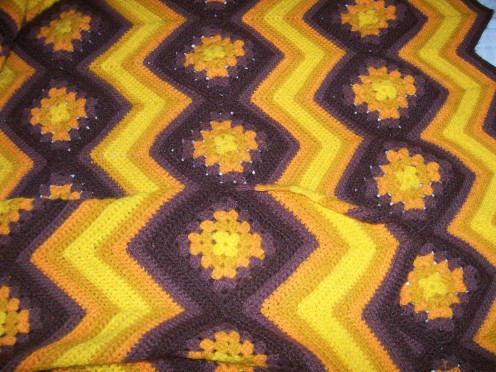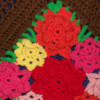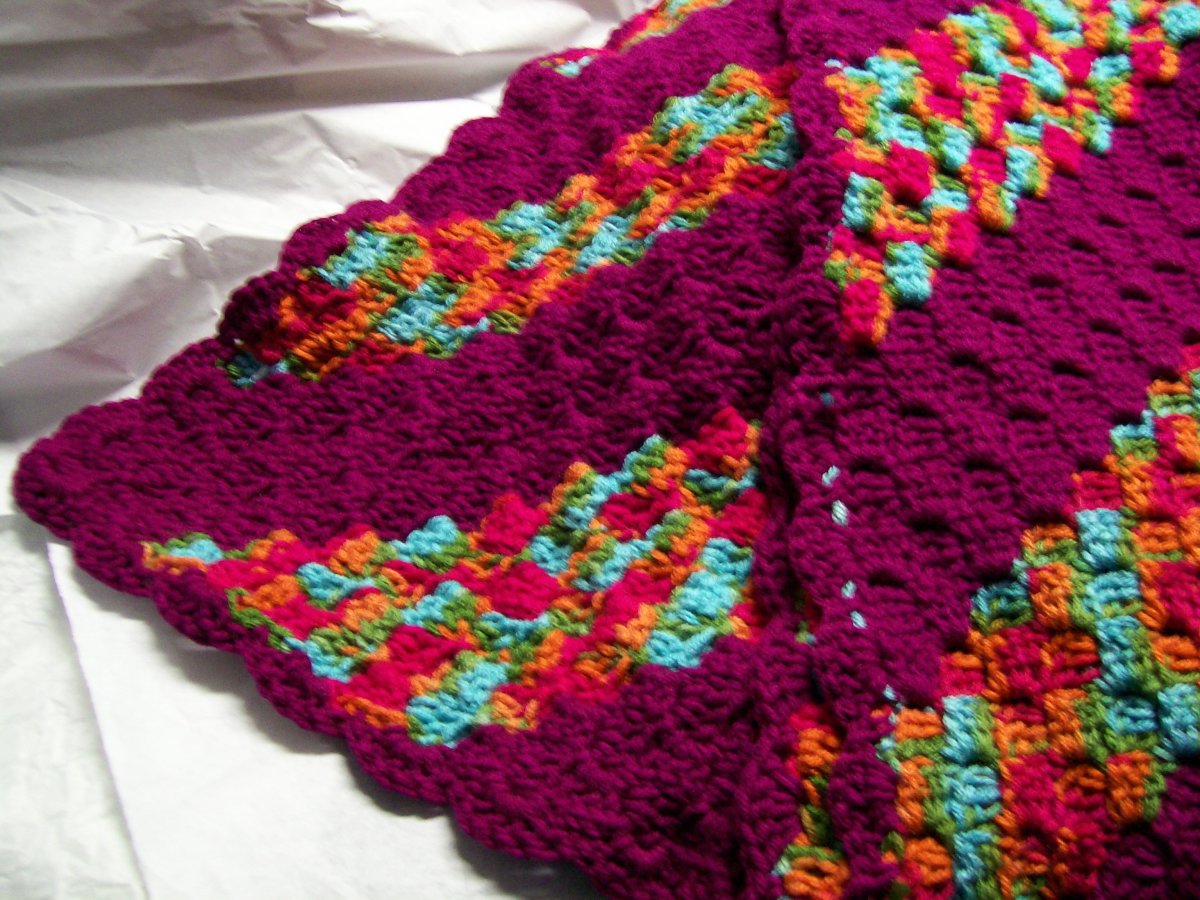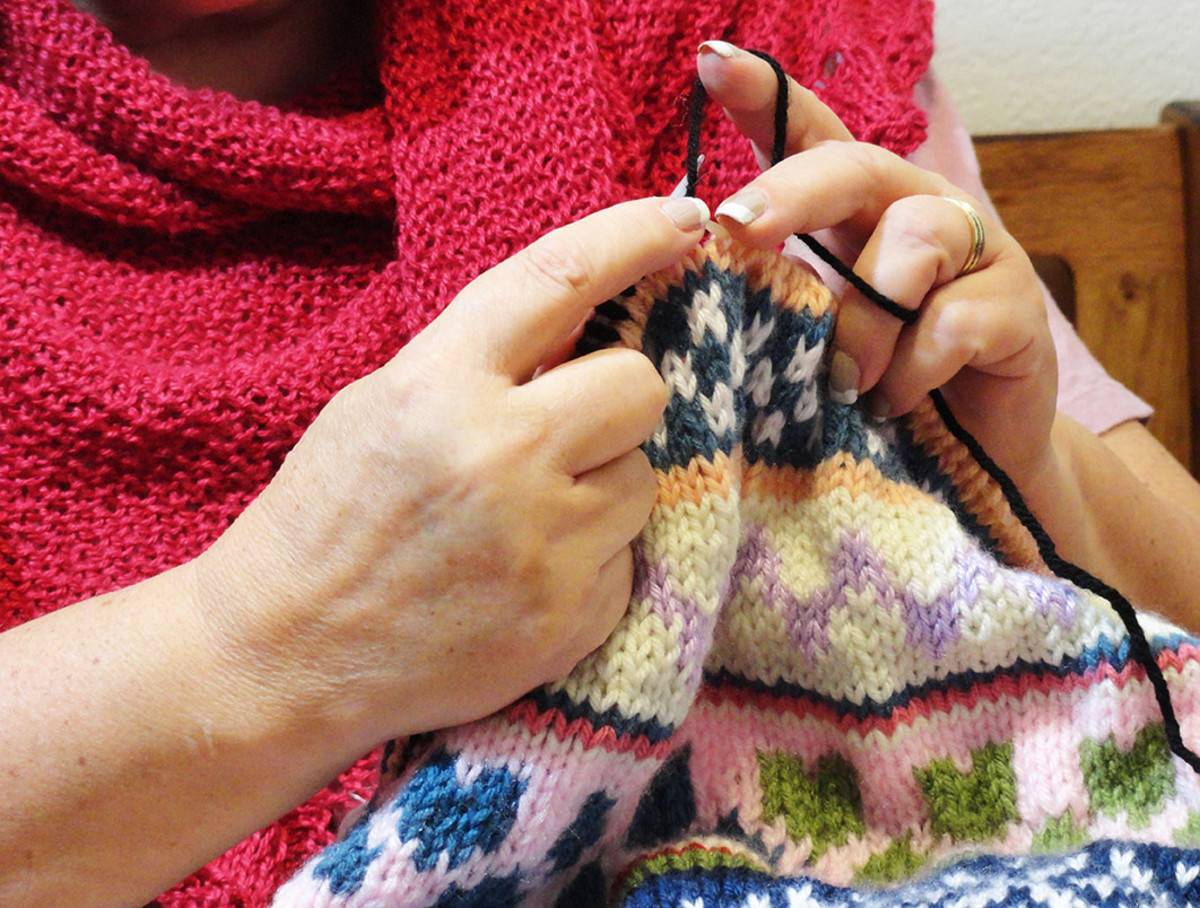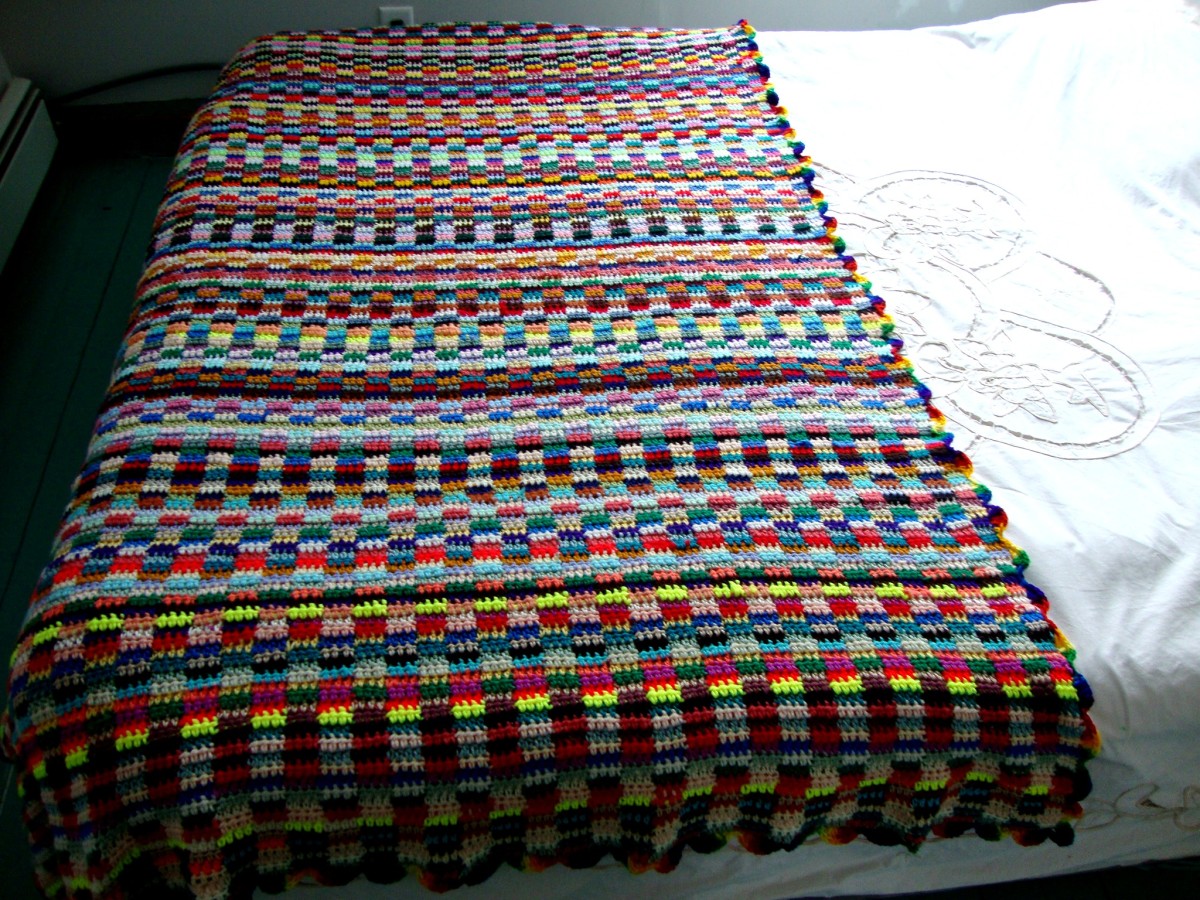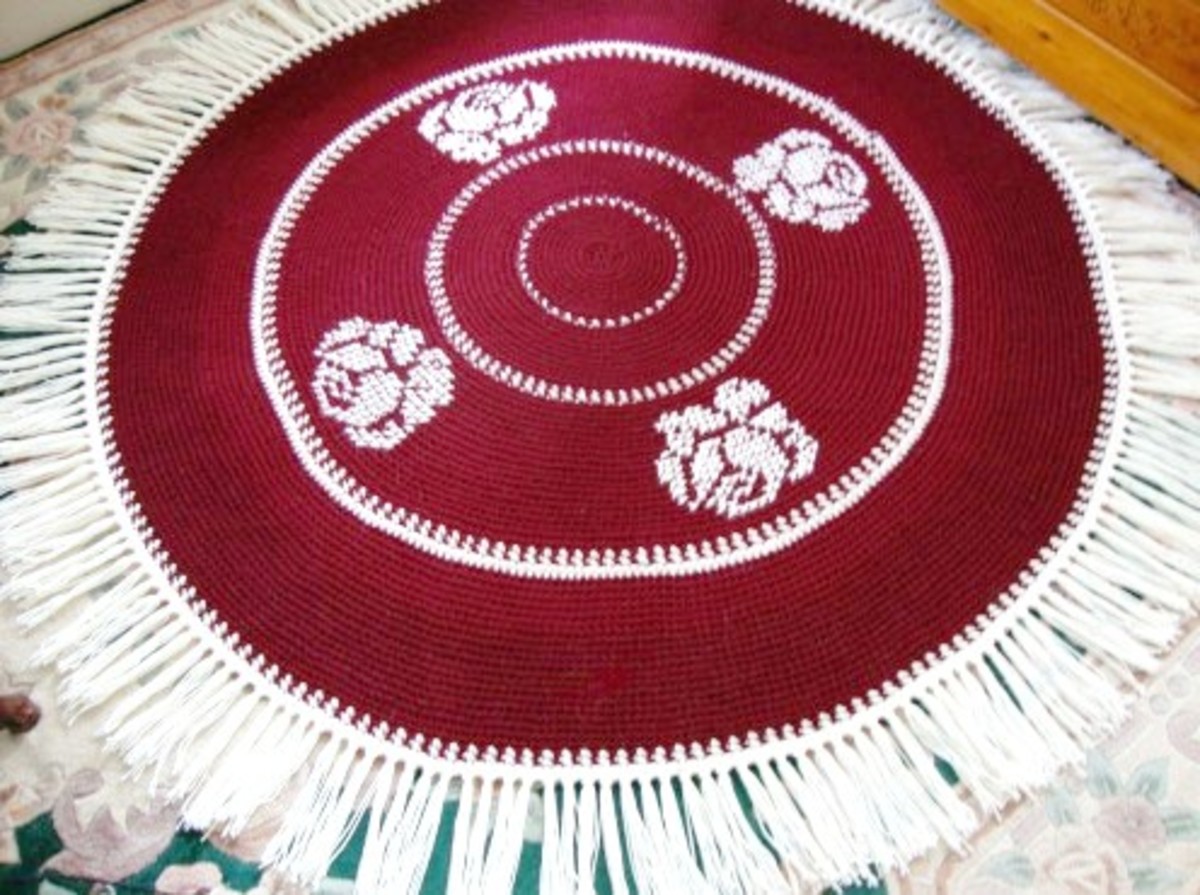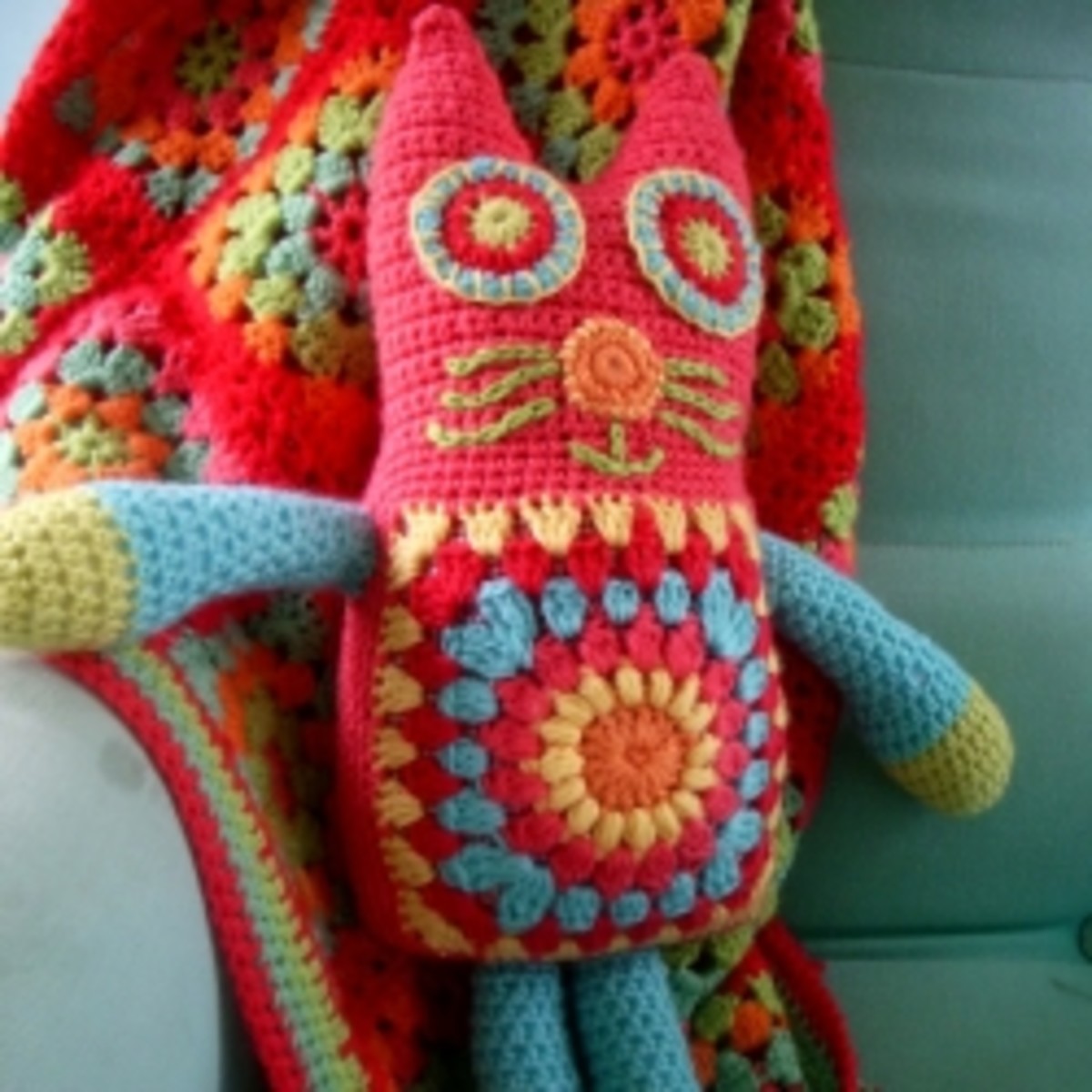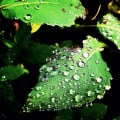- HubPages»
- Arts and Design»
- Crafts & Handiwork»
- Textiles
All That Yarn - Changing It Up
Creating a new design or pattern.
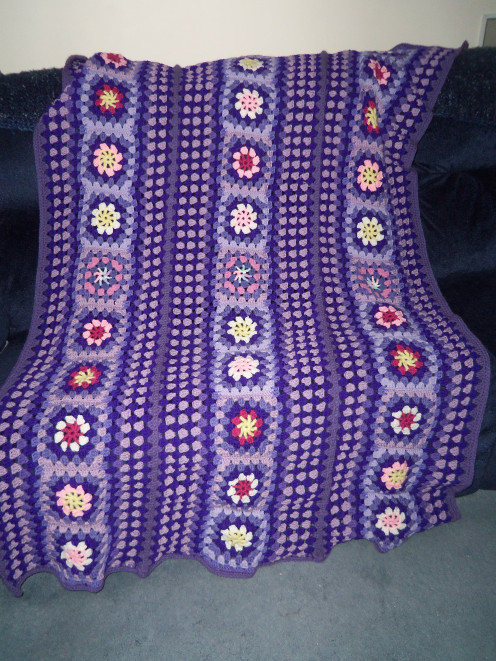
It's eventually all your pattern ideas.
Maybe you have an afghan pattern that you like the looks of but don’t want to do all the color changes that the pattern calls for; or there is something about the number of rows or rounds that you would like to add to, or subtract from, for your own version of the pattern. You can do some adjustments with the pattern as long as you have a working knowledge of crochet (or knitting) stitches and gauge. Sometimes you can add a round of single crochet stitches after the last round of other stitches on a granny square (or other shape). The rule of thumb is at least three single crochet in a corner space to keep the corner from flattening out.
You could also add a contrast color on the last round, or keep going in the same color and just make the square a little bigger and that might mean making fewer squares to cover the length or width. Or maybe matching the color of what will be used to put together the squares. For example, doing a square in a fall/autumn color ombre (variegated) yarn and then doing an extra round in single crochet with yarn matching one of the colors, say a dark green, and then putting the squares together using that dark green yarn for sewing or crocheting the squares together. Another example, doing a baby afghan in pink and blue squares, use soft white or white making one more round or as an extra round of just single crochet on the squares. Then putting the squares together with that soft white or white yarn instead of trying to figure out if you should use either the pink or the blue yarn to join the squares together.
When a pattern has an error.
Sometimes a pattern will have an error in the directions. It happens more often than people think. My sister had an afghan pattern published and found when reading through it in the book that they had messed up part of the directions. They also took a photo of the wrong side of one of the crocheted afghan panels, and I don’t think they even knew what they were looking at when they had the afghan at their office to do the photo shoot. My sister knew it was wrong since it was her afghan and she had designed it and crocheted it in the first place.
I ran into a problem pattern myself once. I was knitting an afghan in yellows and golds. The rows didn’t look like the pattern (a feather and fan pattern) and I got the strangest looking results. I took pencil and paper and worked out the pattern by writing out all the repeats (you know, the * to * or “*, repeat” directions). I also noticed that the amount of stitches didn’t come out the same every row either. I found that there was ONE Purl stitch missing from the pattern repeat. That made all the difference in the design of the afghan. Once I solved the mystery of the missing purl, I was able to get the pattern to come out the way that the pictures showed for this afghan. I kept in the mistake rows and I use it as a teaching tool to show how just one stitch off or missing can really change a pattern, sometimes not for the better.
Feather and Fan - What missing a Purl does.
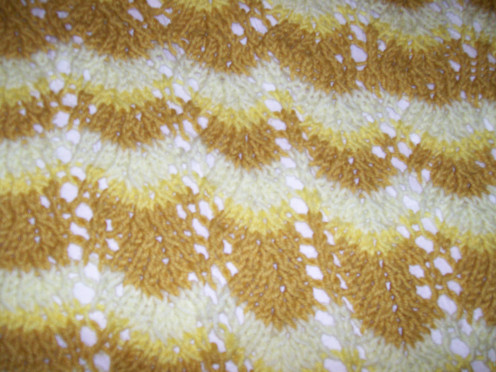
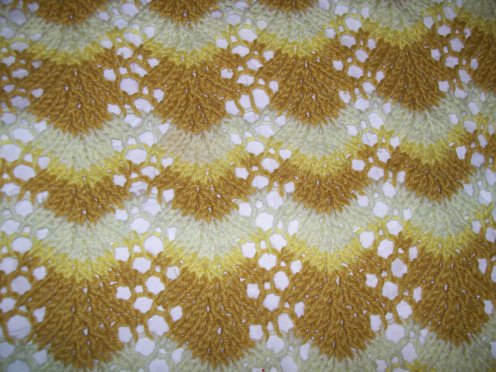
Class Project - 3 Squares
I found an afghan with big squares that I decided to use as a class project for an advanced beginner crochet class. There were three types of squares that had different color combinations – a granny square, a smooth square, and a bobble square. The pattern gave directions for 12 squares and said to repeat that again for a total of 24 squares (two of each color combination).
I figured that the class could do one square in class and two more at home of that pattern before the next week’s class. Then in just five class sessions, about two hours each, we would have finished half of an afghan done and it could be a lap-afghan size. Then they could repeat it on their own to complete the full size afghan at home. The tricky part was the way the squares were joined together and I calculated that three class sessions making squares, one session on how to join the squares with the “joining round” stitch, and then putting it together on the last session. The only problem we would run into was if a student missed one of the classes and got behind on the square pattern from that week. Also, if they didn’t do their “homework” of making two more of the same squares (in different colors) then there would not be enough to put together on the last class session. I think I ended up with only one or two that had enough to start putting it together. So I knew not to do that again for a class project as it required a full time attendance commitment from everyone in the class.
Samples from Class Project - 3 Squares
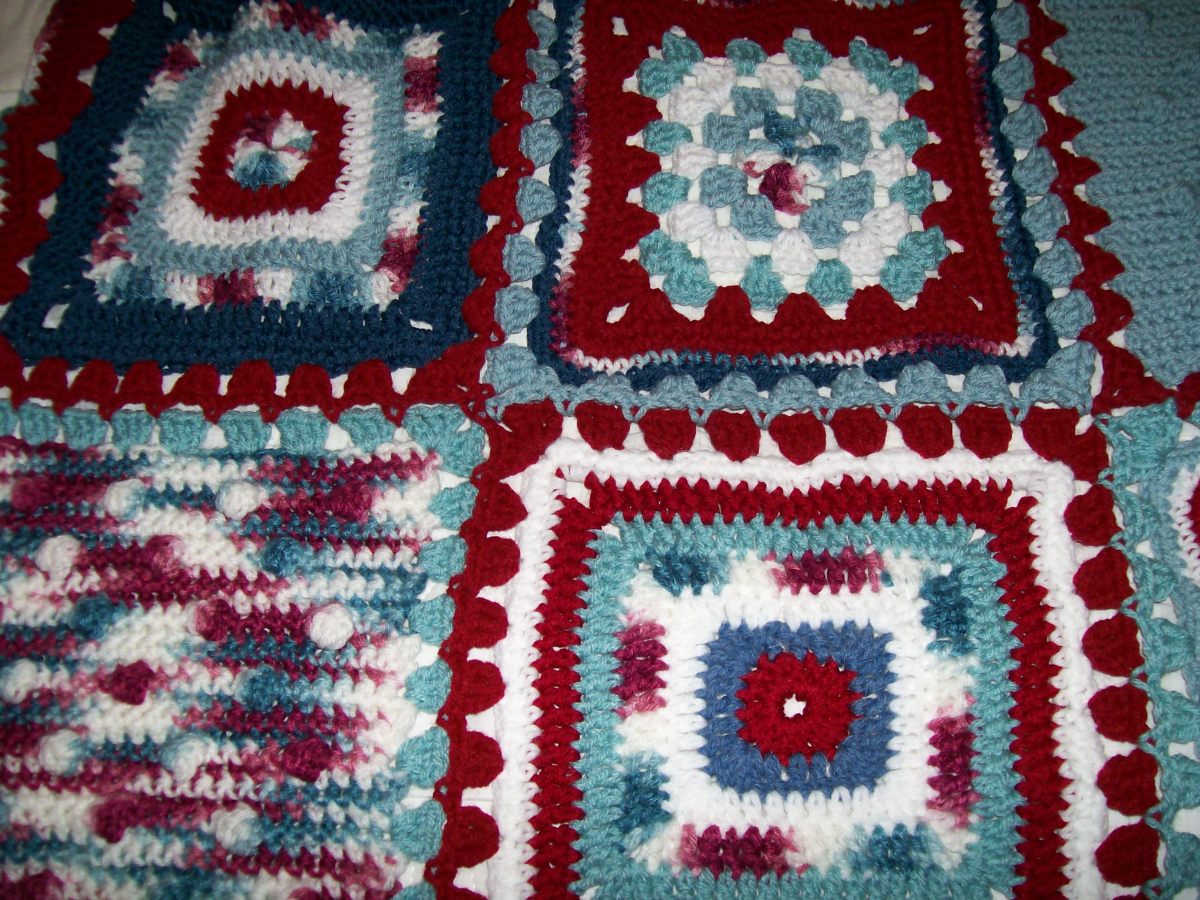
More on the Class Project Pattern
My three squares were made as examples for the class. I didn’t have enough of all the yarn colors that I used for those samples to make the full afghan. I took similar color skeins out of my stash, but ones that had only one skein of that particular color and no way to get more of it. So when the class was over and I had my few sample squares, I had to figure out how to make enough squares to finish an afghan with those colors. I managed to find similar colors and since they were either a full square of one color (the bobble square), or each round was a different color (for the granny and smooth squares), then I was able to finish and put together all the squares into one afghan. I did have to buy more of the red since I started doing the last round (the joining round) in either robins egg blue or ranch red. I kept doing just those two colors for the joining rounds so they were alternating back and forth – blue, red, blue, red.
I had ordered extra robins egg blue as it was no longer available in the store and I wasn’t sure how much I would need to finish my project. I had enough leftover skeins that I made a second (smaller) afghan using just the bobble squares and the smooth squares patterns. Started out that way because this yarn is not as “dense” as the old original yarn (same brand, same color) and the one bobble square I made from it came out much smaller than the others with a more “dense” yarn. I would call this new yarn “wimpy” as it does not have the body of the old style and splits more easily while working with it. Don’t know why yarns are not as good as they used to be made, and why the twist is not as tight.
The style with 2 squares.
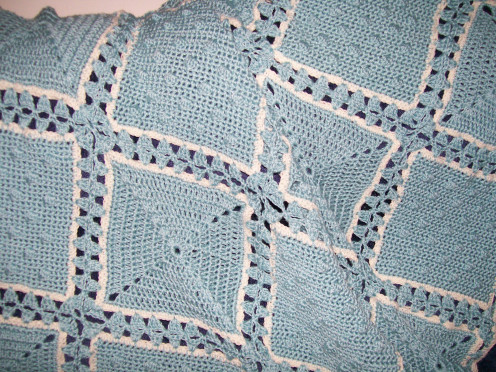
They want me to make HOW many squares???
Changing up the pattern can be helpful in cutting down on the amount of work that is listed in the pattern. For example, if I had to do a pattern calling for 200 granny squares (and there are those patterns out there), I think I would use a larger crochet hook and try to add more rounds that I might have only 50 to 100 squares instead. Sewing that many squares together would take a very long time and the project might end up in the “to be finished” pile. I would suggest crocheting them together instead of sewing. There are several methods of crocheting squares or strips together and can be found with an internet search for “crochet joining”.
My first "All That Yarn" blog showed a purple afghan (see photo at the top of this page) that I made out of three strips of granny squares. I had to do some pre-planning, sketching, and thinking to figure out what to do with the three strips that I bought already finished.
Times and Gauges can Change
When a project sits and waits for a long time, the hook size might need to be changed to a different one than the pattern calls for.
I found that when I was doing a granny-ripple afghan, which took about 15 years to get done since I kept putting it aside, I needed to change hook sizes. I had started off using a size G crochet hook and working rather tightly. By the time I finished it I was working loosely and using a size F crochet hook. The size difference is very noticeable from the top end to the bottom end. The same size yarn, the number of stitches, but a very different gauge by the end of the project. I had crocheted all the squares and half squares first, and then put in the ripple parts. I was lucky that I did not run out of the yarn as colors change from year to year even from the same yarn supplier. Now I would like to find the pattern, but have no clue as to where it disappeared to, and it is no longer available even over the internet.
Update: I found a woman who had the pattern and the yarn from the same afghan kit. She emailed me the pattern and then I purchased her yarn. Now I can re-do this afghan and hopefully have the same gauge throughout this time. (Still in my "to do" pile.)
Gauge can change over time.
